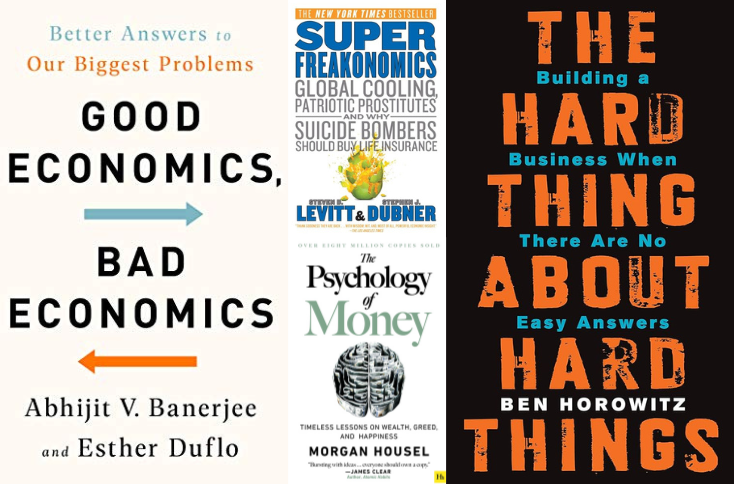
The serial acquisition model, executed well, can be very profitable for investors, but you need to WEED OUT the rookies!
Invest too early and overpriced shares will get pummelled with some decent common sense and possibly trade down to the pennies. Look at that hyped-up Wecommerce listing, Upland Software’s net retention smack-down or the Inspire Veterinary Partners ongoing dillution debacle!
Avoid the rookies, demand at least five or better yet— ten years of market validation.
Check out RollupEurope’s take on which serial acquirer types are most likely to succeed.
With a publicly traded serial acquirer, you’ll pay a per share price today, that reflects all of the acquisitions made to date. Your reward will be all of the acquisitions yet to be made in the future. Think about that. If you wisely choose proven compounders run by talented capital allocators, you will be rewarded handsomely, over time.
Invest too late and … wait, how can you invest too late in a true compounder, a serial acquirer, a multi-bagger contender; run by capable management that have honed their craft and have a history of adhering to a wise capital allocation framework?
Let’s explore the essence of serial acquirers, debunk common misconceptions, and assess the potential for substantial returns.
What is a serial acquirer?
A serial acquisition strategy involves the systematic and deliberate acquisition of businesses with the aim of aggregating profits to fund continued acquisition activities, paying down debt or returning capital to shareholders.
Unlike traditional mergers and acquisitions, which may be sporadic or driven by specific opportunities, serial acquirers operate with consistency and strategic focus. Focused and busy acquirers (programmatic) may buy and integrate five or more companies each year. According to McKinsey these will be the best overall performers.
Key characteristics of a Serial Acquirer
- Consistency: Serial acquirers follow structured processes to identify, evaluate, and acquire companies, gradually accumulating assets and capabilities over time.
- Strategic Focus: Each acquisition is carefully selected to align with the acquiring company’s overarching goals, ensuring acquisition prospects meet predefined parameters, are complementary and are expected to perpetuate an already proven process of creating shareholder value.
- Long-Term Perspective: This approach prioritizes sustainable growth and value creation over quick wins, emphasizing the long-term benefits of consistently accretive acquisitions.
Misconceptions of a Serial Acquirer
- Perceived Complexity: Some view this strategy as overly complex, but with careful planning and ethical leadership, it can be executed effectively by companies of all sizes.
- Short-Term Focus: In a world driven by quarterly results, the long-term potential of a serial acquisition model may be undervalued by investors favoring immediate returns.
- Risk Aversion: While there are risks involved, disciplined execution and strategic alignment can mitigate these risks, making serial acquisition a viable and even superior strategy for driving outsized long-term growth.
- Lagging performance- Stick with the leaders, and this isn’t the issue. In fact, why buy the S&P index or another market weighted ETF if you can buy a handful of high-quality serial acquirers with a 10 year historical CAGR of 25% or greater? Any single company in isolation can be derailed by a competitor or some external unexpected event. In contrast, a proven serial acquirer will only have weak leadership to blame for sub-par performance. Find serial acquirers with disciplined leaders and aligned teams and you’ll have great outcomes, perhaps avoiding many of the risks inherent in single focus businesses and competitive markets.
The Potential for Long-term Compounding
- Strategic Diversification: Acquiring multiple businesses spreads risk and enhances stability, particularly during economic downturns. It would be difficult for a market storm to topple a majestic tree, deeply rooted. The growth potential and runway of a great serial acquirer is thus typically underestimated, over the long run.
- Economies of Scale: Growth through acquisitions can lead to cost savings and improved profitability as the acquiring company realizes efficiencies in purchasing, production, and distribution.
- Synergies and Integration: Thoughtful integration efforts can create synergies between acquired businesses, unlocking additional value and enhancing competitiveness. Many new serial acquirers misunderstand synergies, overestimating its importance and often investing in synergies that will never materialize. Experience is the best teacher. Great allocators don’t waste shareholder profits on the flavor of the day feature add-ins. That’s costly. Value added pricing and getting customer buy-in first, are examples of best industry practices.

It would be difficult for a market storm to topple a majestic tree, deeply rooted.
Real-World Examples
Successful serial acquirers like 1. Constellation Software 2. Topicus 3. Lumine Group 4. Enghouse Systems 5. Exchange Income 6. Decisive Dividend and 7. Terravest Industries have all demonstrated the effectiveness of thoughtful leadership and a tested and reality-tuned acquisition focused strategy.
These companies have significantly compounded shareholder returns over time, by adhering to systematic and repeatable processes. Ignore those who self-proclaim to be great capital allocators. Demand substantive proof— data proving consistently accretive acquisitions and shareholder value creation.
Bringing it Together
In summary, investing in high-quality serial acquirers offers a compelling strategy for long-term wealth creation. By adopting a disciplined and strategic approach to acquiring and integrating businesses, serial acquirers can unlock tremendous value for shareholders while doing so with less risk.
In fact, potential acquisitions typically go on sale during a market downturn— shrewd serial acquirers, like the aforementioned seven, are positioned well to jump-in at exactly these times.
Disclaimer: The information provided herein is for educational and informational purposes only. It does not constitute investment, legal accounting, or tax advice. No recommendation or advice is being given as to whether any investment is suitable for a particular investor or a group of investors. Before making any investment decisions, it is crucial to seek advice from an independent financial advisor. Every individual’s financial situation is unique, and what works for one person may not be suitable for another. Additionally, consider your risk tolerance, investment goals and time horizon when evaluating investment opportunities. Remember that all investments carry risks including the potential loss of capital. Past performance is not necessarily indicative of future results. Always conduct thorough research, and do diligence before committing to any investment.


